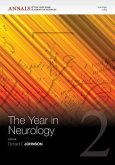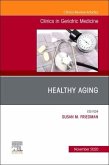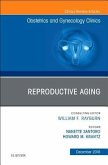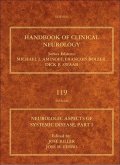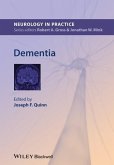The aging of society is leading to many challenges across all areas of medicine. The problems of muscle aging have led to a rise in the incidence of less common conditions, which though not terminal are debilitating and frequently progressive, and often underdiagnosed or misdiagnosed. Written by a team of international experts, this landmark book will look at the general clinical problems associated with muscle aging before examining inclusion-body myositis and myopathies, a group of the more important diseases of muscle aging. With case vignettes to aid diagnosis to ensure correct management of an illness, here is an essential reference for professionals and students.
Muscle weakness with ageing is almost inevitable, generally beginning to manifest beyond the age of 40, and is usually unstoppable. It can lead to reduced mobility, increased risk of falling, injury, and even death. But "you're just getting old" is not a sufficient diagnosis. Specific causes of neuromuscular symptoms may explain progressive muscle weakness, and should be investigated for potential treatment. Muscle Ageing, Inclusion-Body Myositis and Myopathies explores the clinical and pathological expression of muscle weakness in aging persons. Case studies demonstrate how physicians can more accurately diagnose weakening elderly patients and make better management decisions. It also explores sporadic inclusion-body myositis and hereditary inclusion-body myopathies. The former, the most common progressive muscle disease in the over 50s, is frequently under-diagnosed and, with the increasing population of aged individuals, is presenting a greater challenge. This disease of muscle has pathological similarities with the well-known Alzheimer and Parkinson brain diseases. Edited and written by a leading international cast of authors, Muscle Ageing, Inclusion-Body Myositis and Myopathies provides a state-of-the-art guide to ageing-associated neuromuscular disorders. It should be in the hands of all those involved in the care of aging and muscle-weakened patients. Titles of Related Interest Neuromuscular Disorders Tawil and Vennance (eds); ISBN 978-0-470-65456-9 European Handbook of Neurological Management, Vol 1, 2e Gilhus, Barnes, Brainin (eds); ISBN 978-1-4051-8533-2 European Handbook of Neurological Management, Vol 2, 2e Gilhus, Barnes, Brainin (eds); ISBN 978-1-4051-8534-9
Muscle weakness with ageing is almost inevitable, generally beginning to manifest beyond the age of 40, and is usually unstoppable. It can lead to reduced mobility, increased risk of falling, injury, and even death. But "you're just getting old" is not a sufficient diagnosis. Specific causes of neuromuscular symptoms may explain progressive muscle weakness, and should be investigated for potential treatment. Muscle Ageing, Inclusion-Body Myositis and Myopathies explores the clinical and pathological expression of muscle weakness in aging persons. Case studies demonstrate how physicians can more accurately diagnose weakening elderly patients and make better management decisions. It also explores sporadic inclusion-body myositis and hereditary inclusion-body myopathies. The former, the most common progressive muscle disease in the over 50s, is frequently under-diagnosed and, with the increasing population of aged individuals, is presenting a greater challenge. This disease of muscle has pathological similarities with the well-known Alzheimer and Parkinson brain diseases. Edited and written by a leading international cast of authors, Muscle Ageing, Inclusion-Body Myositis and Myopathies provides a state-of-the-art guide to ageing-associated neuromuscular disorders. It should be in the hands of all those involved in the care of aging and muscle-weakened patients. Titles of Related Interest Neuromuscular Disorders Tawil and Vennance (eds); ISBN 978-0-470-65456-9 European Handbook of Neurological Management, Vol 1, 2e Gilhus, Barnes, Brainin (eds); ISBN 978-1-4051-8533-2 European Handbook of Neurological Management, Vol 2, 2e Gilhus, Barnes, Brainin (eds); ISBN 978-1-4051-8534-9



